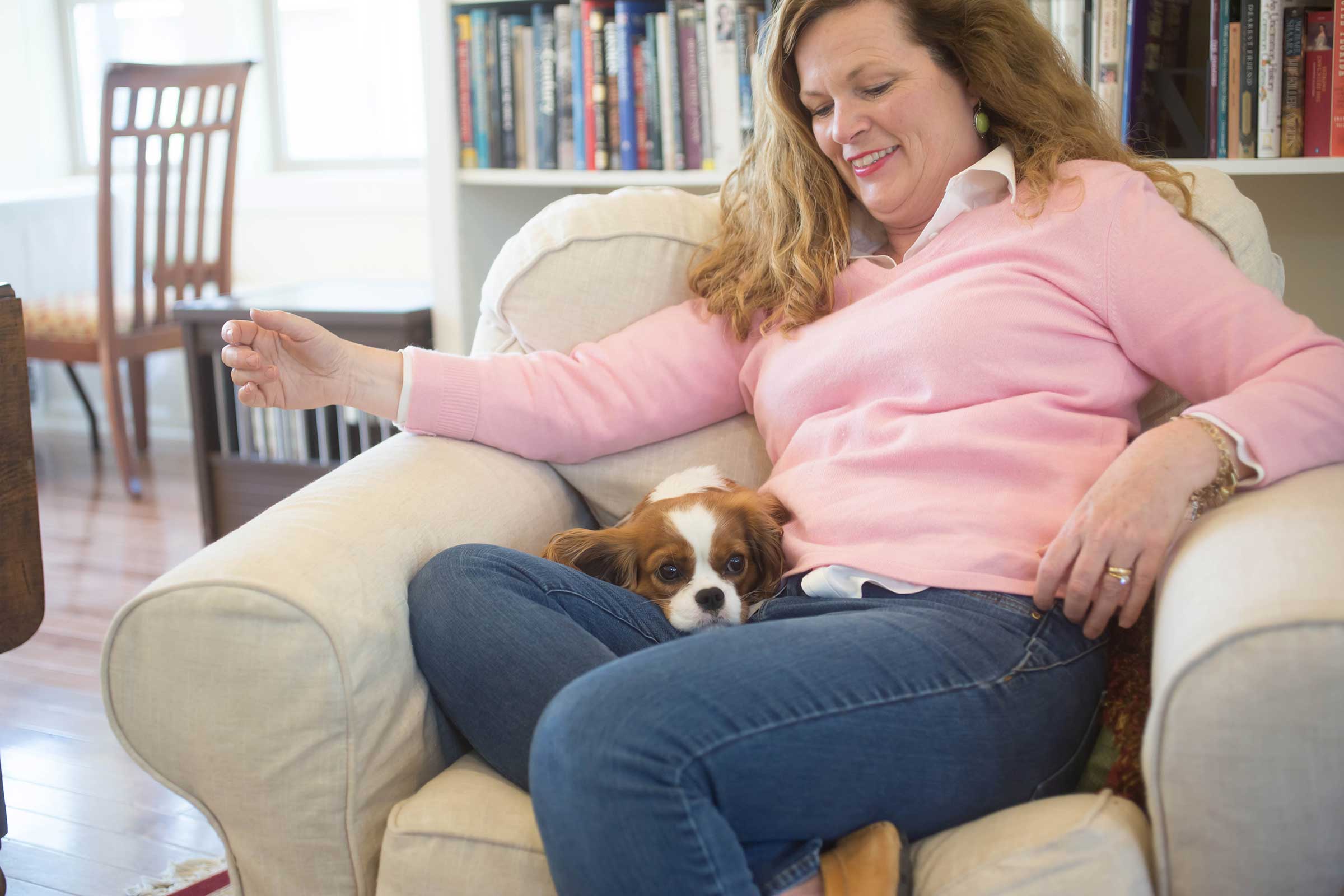This post may contain affiliate links. Full disclosure policy
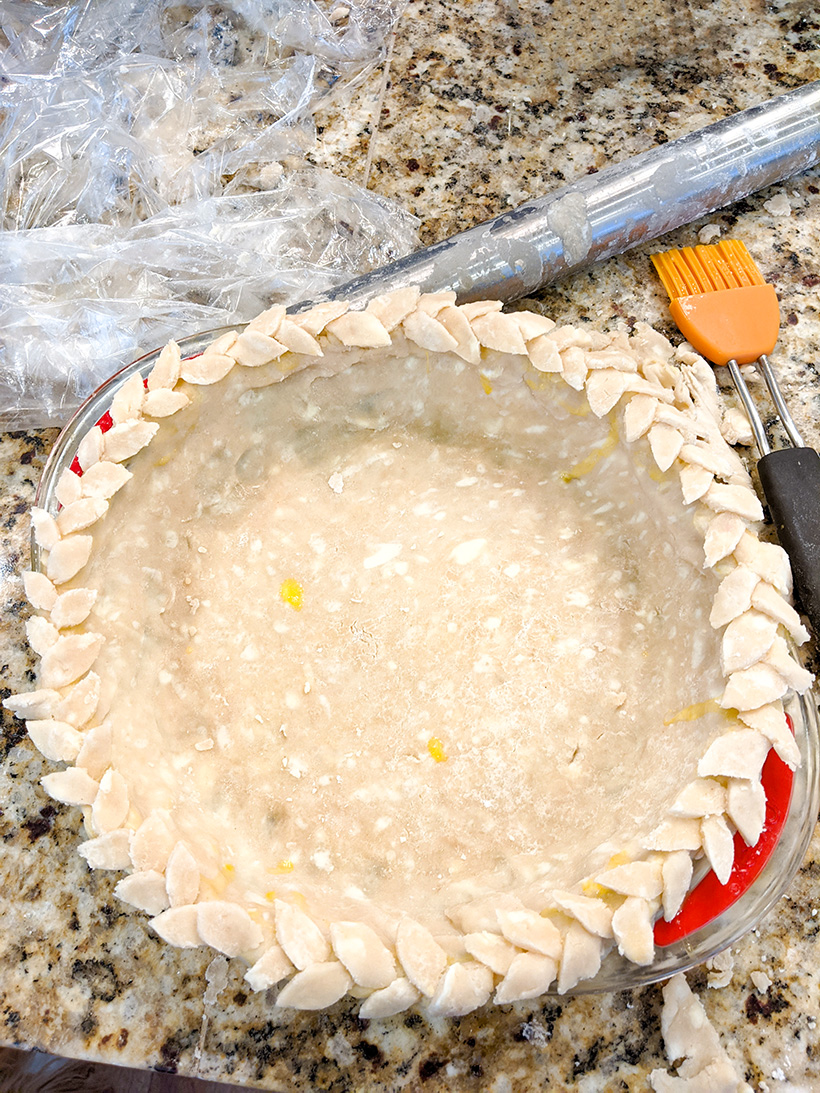
In theory, nothing could be easier than making pie crust from scratch.
It’s basically flour, some kind of fat, some liquid, and a little salt. There’s no complicated list of ingredients. You don’t even have to worry about it rising too little or too much. Easy, right?
Well, yes. In theory.
Finding the Perfect Balance in a Pie Crust
But the fact that it is so simple is part of what makes pie crust so complicated. (This is a metaphor for so many things in life, I find.) With no leavening agent in the recipe, achieving that light, flaky, tender crust that marks a truly terrific piece of pie can be tricky.
So, it’s no wonder that many truly fine home cooks and bakers buy those refrigerated packages of pre-made pie dough from the grocery store. I did for years and years because, honestly, they’re pretty reliable and not that bad. But they’re also not great.
For all those years when I was buying my pie crust at the grocery store, I kept thinking about those sublime crusts I would run across now and then when I ordered pie at some little diner or café. You know what I’m talking about, those little-hole-in-the-wall spots where some sweet old lady named Flo or Aunt Mary makes every pie and pie crust from scratch. No premade crusts. No canned filling. Homemade crusts with fresh fruit and lots of love.
Those were the kinds of pies I wanted to make, but I just didn’t seem to have the knack. Every now and again, I would manage to make a flaky pie crust. But often it seemed to be a happy accident. The next time my pie crust would turn out flat and doughy and dreadful.
The Perfect Crust – Not Just a Dream
About ten years ago, I came across a recipe that fulfilled all my pie baking dreams; an easy and reliable recipe that turned out a perfect pie crust every single time! How? Well, it’s all due to a surprising secret ingredient that I never, ever expected to find in a pie recipe.
But before I get to that secret ingredient (I know the suspense is killing you but hang in with me. This is important.) I want to talk about temperature. If you want to make a great pie crust – or any good pastry – you’ve got to embrace the cold.
Your hands should be cool. Your rolling pin should be cool. (I even put mine in the refrigerator before I roll my dough.) Your counter should be cool. Some people swear by rolling their dough on a marble slab.
And your ingredients should be cold, really cold. I keep the shortening sticks I use for pie in the freezer. I also pop the butter in there for about 20 minutes before I make the pie. I don’t just use cold water, I use ice water. And I also put the vodka in the freezer before I use it for the pie.
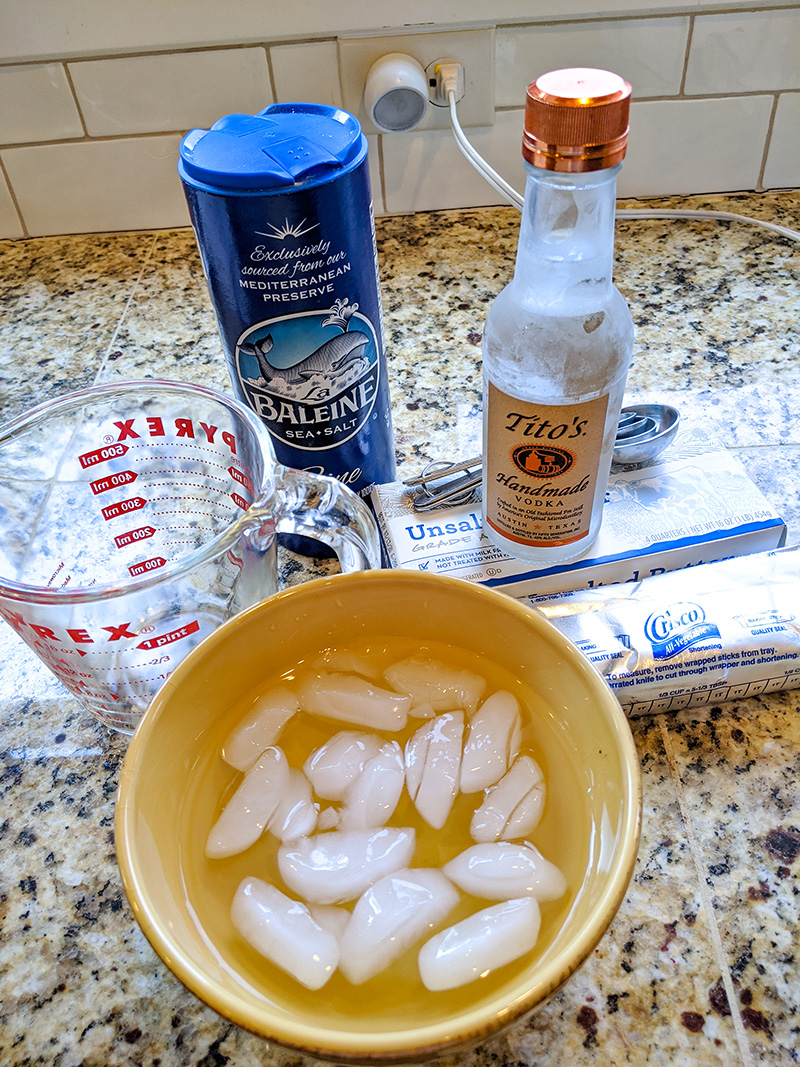
The Key Ingredient; Vodka
Yes, you read that right. My perfect pie crust recipe calls for vodka. (Before somebody makes the joke, the vodka goes into the dough. Not the baker.) Weird, right? But it works wonders!
Here is why putting a little vodka into your dough makes for a perfect pie crust. Vodka has no flavor (I know there are flavored versions out there, but don’t try using them in this recipe). It’s also about 40% alcohol. During the baking process, that alcohol evaporates. When it does, it leaves lots of lovely little air pockets in the dough, which gives you a beautifully flaky crust.
Using vodka in your pie dough definitely sounds like a crazy idea but it really is the best way to get a flaky, tender, perfect pie crust every single time. I even use it in most of my recipes, including my bourbon pecan pie.
Here’s the recipe.
Print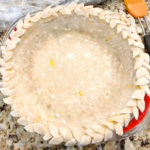
Perfect Pie Crust from Scratch
Ingredients
2.5 cups unbleached, all purpose flour (plus extra for rolling out the dough)
1 t salt
2 T sugar
12 T very cold, unsalted butter, cut into ¼ inch slices
½ cup very cold vegetable shortening, cut into pieces
¼ cup ice cold flavorless vodka
¼ cup ice water
Instructions
- Place 1.5 cups of flour, plus salt and sugar into a food processor. Pulse briefly to mix ingredients. Add the butter and shortening and process for 10 to 15 seconds, until clumps of dough just start to form. At this stage, it should look a little like cottage cheese.
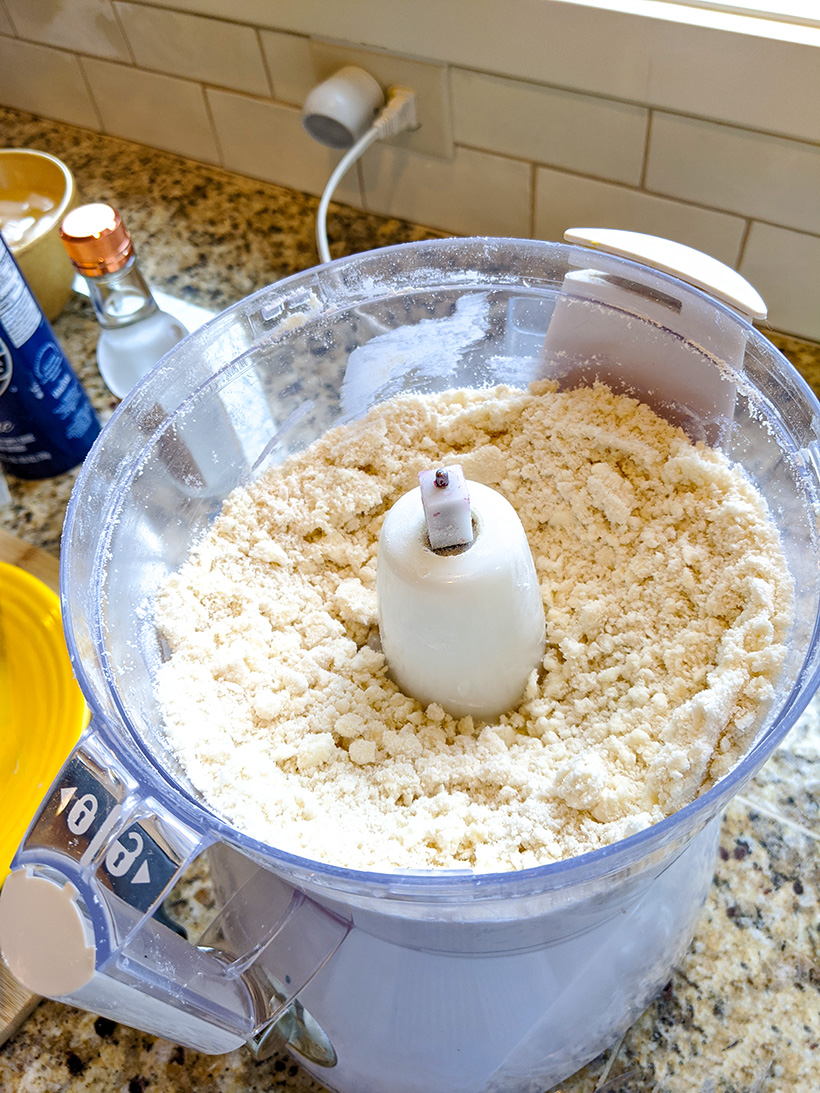
- Scrape the dough down from the sides of the bowl with a rubber spatula. Add the remaining cup of flour. Give the processor another 4 or 5 quick pulses to mix in the last of the flour.
- Pour the dough mixture into a bowl. Sprinkle the vodka and the water over the dough, using a rubber spatula to fold the liquid into the dough, pressing it down with a folding motion until the dough sticks together. (Be gentle! You don’t want to overwork the dough.)
- Divide the dough into 2 balls. Press each ball into a disc the shape and side of a saucer. Wrap each disc in plastic wrap and refrigerate for at least an hour or up to 2 days.

- When you’re ready to make your pie, take the dough from the refrigerator and place it on a cool, generously floured surface. Roll the dough out into a circle, about 1/8 inch thick. Bake according to the instructions called for in your favorite pie recipe.



